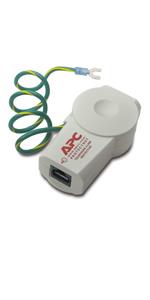

| Without VAT | With VAT | |
|---|---|---|
| Base Price: | €32,26 | €39,04 |
| Recupel: | + €0,06 | + €0,07 |
| Total: | €32,32 | €39,11 |
| Part Number: | PTEL2 |
| Language: | UK |
Data line surges make up an overwhelming majority of all surge
induced damages where the equipment was thought to be already
protected but had a back door such as a modem line unprotected.
Network interface cards, in particular, can be destroyed by
relatively mild spikes.
According to Ethernet standards (IEEE 802.3), non-AC network
electrical hazards include: Direct contact between components and
power or lightning circuits, static charge buildup on cables and
component, high-energy transients coupled onto the local cabling
system (those induced by other cables which are installed in the
general proximity of network cables or lightning within a mile
radius) and potential differences (even from building to building,
between safety grounds to which components are connected.)
Surge Protection and Filtering
Physical
Environmental